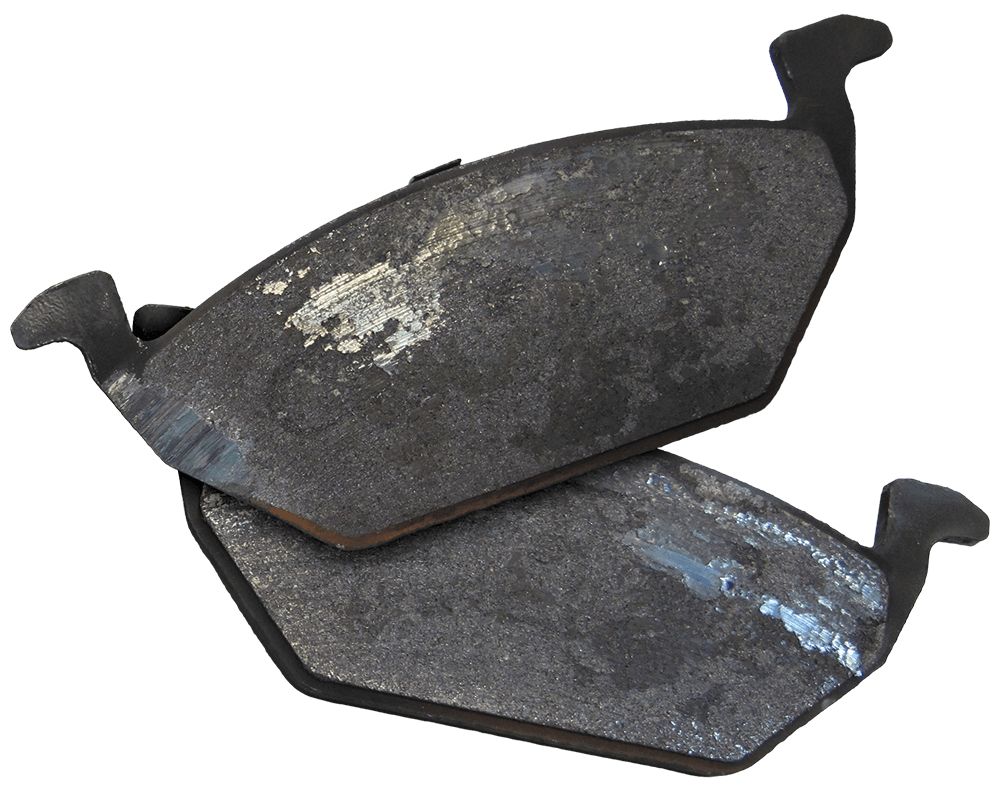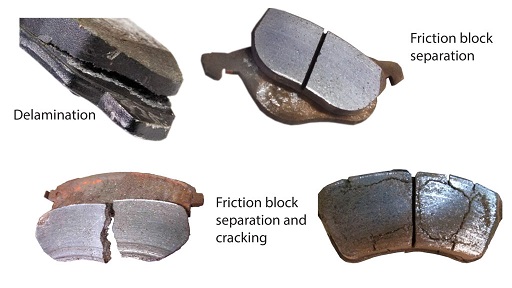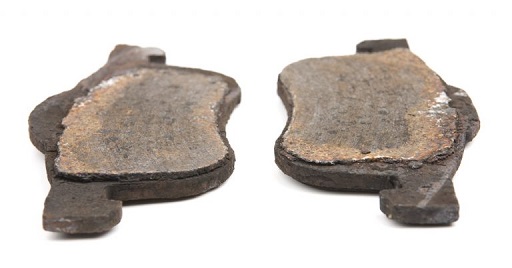FAQ: Brake Pads
When you hear a squealing noise upon applying the brakes, it usually is caused by a high-frequency vibration of metal rotors, drums, or brake pad backing plates. Also, excess corrosion that forms over time on the non-contact surfaces of rotors and drums is one of the leading causes because rust is looser and less dense in nature, therefore more likely to create resonation.
Most brake pads are equipped with sensors built in to the brake pad material. When for example a brake pad that's 20 mm thick new, wears down to approximately 5 mm of its initial pad thickness remaining, the metal sensor usually becomes exposed and makes contact with the disc, resulting in a constant metal on metal contact, causing squealing and may even trigger an electronic sensor triggering a warning light on the dash if your vehicle is equipped with such. Signalling the driver that the brake pads themselves are worn out to about 25% of its lifespan. Although there is a little pad material left, it’s usually wise to start planning a service replacing your pads and checking the rest of the brake system.
Keep in mind that there outer and inner brake pads clamping on both sides of the rotor, and that a visual inspection isn’t always possible to do correctly without wheel removing the wheel or putting the car on a ramp.
Depending on vehicle, the inner brake pads can wear faster than the outer pads, so the outer brake pads that you can actually see through the wheel spokes, cannot be fully trusted as a good measurement of the remaining lifespan.
It's also important to know that putting a set of new pads on deeply worn rotors may cause the edge of the new pad to rub edges, causing more squealing noise than with the previous sets of pads.
When you hear a clicking noise from the wheels after depressing or releasing the brakes it could indicate that the pads are moving around improperly. Brake pads are mounted under pressure between the caliper and brake rotor, built in “anti-rattle” clips lock the pads in place. However, over time the steel of these “anti-rattle” or spring clips can become brittle and break, allowing the brake pad to move loosely in its seat, creating vibration and clicking noises during braking. When brake pads have seen enough use for this to happen, it's likely they are also well-worn out often unevenly as a result. Reason to give them attention soon, if not immediately.

Obviously the materials used to manufacture a certain brake pad have a clear effect on its price. However, brake pads also require a great deal of testing and engineering because they’re made for a specific vehicle and/or type of use. A quality brake-pad from a manufacturer like StopTech, Hawk or EBC for example, will spend a lot of time and money on developing a brake-pad application for your vehicle. This includes simulated and on-the-vehicle testing. This type of testing is people- and equipment-intensive.
Another cost of brake-pad manufacturing is quality control. Reputable manufacturers will pull random samples from the production line and perform destructive testing. This costs money and time and may mean that a batch of pads could be rejected. Marketing also is an associated cost for some brake-pad lines. But, if a company is willing to advertise their brake pads, chances are they’re willing to stand behind their brand name.
In short; no. Brake pads are designed to wear out. How fast they wear is dependent on the driver and the vehicle more than the pad’s friction material formulation. While there are pads on the market that offer a longer service life, it is difficult to say if one will last longer than another pad simply because of the variables of the type of use, type of driver and driving style and so on. What can make a brake pad last longer is replacing the hardware, installing it together with new brake rotors or resurfacing the current rotor with the correct finish. These two items can increase the life of the brake pad more than any other factor.
Corrosion can also limit the life of a brake pad. Corrosion can attack the backing plate and cause the friction material to delaminate. When the friction material separates from the backing plate it can cause noise at first. But, when the friction material departs the caliper, it is a safety issue because it can cause the piston to overextend and leak. To prevent this from happening, some pads use a galvanized backing plate and mechanical attachment.
 |
 |
| Examples of delamination & friction material separation | Heavily corrored and worn brake pad |
Yes and no. It actually depends on the new brake pads and overall condition of the rotor. Some brake pads transfer a very thin layer of friction material onto the surface of the rotor. Ceramic and some NAO pads use this type of friction. The transfer layer is bonded to the rotor’s surface and cannot be washed away by water or wheel cleaners. The only way to remove it is by removing it with a brake lathe. The old transfer layer can contaminate the new brake pads, which can cause noise at best and longer stopping distances in some cases. Starting with a brand new brake rotor or clean rotor surface gives the new brake pads a chance to establish an even transfer layer optimizing both performance and longevity.


Login and Registration Form